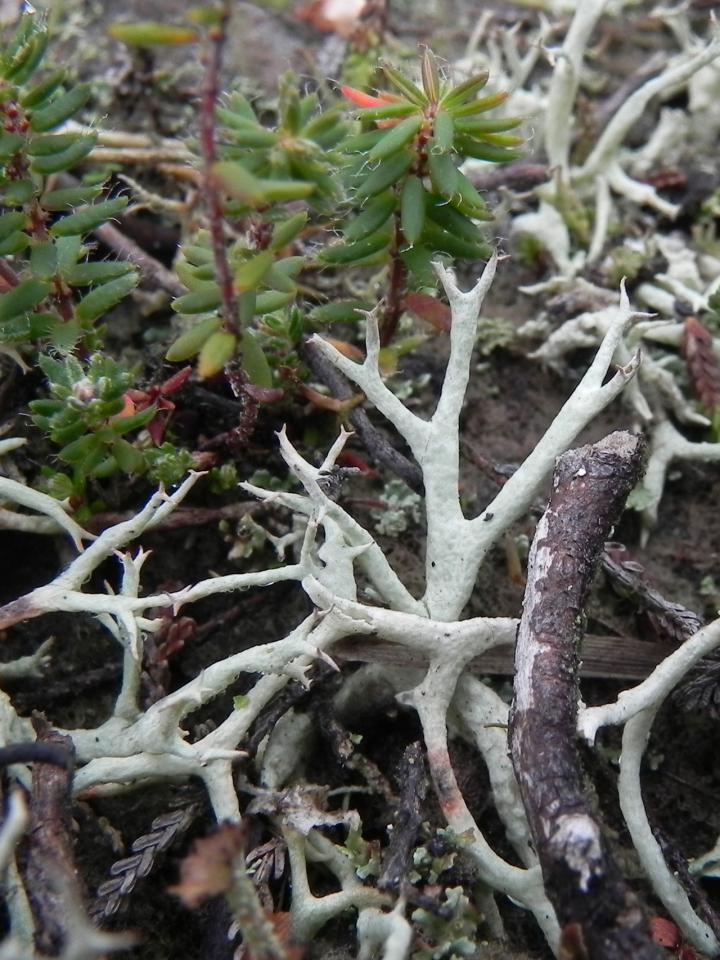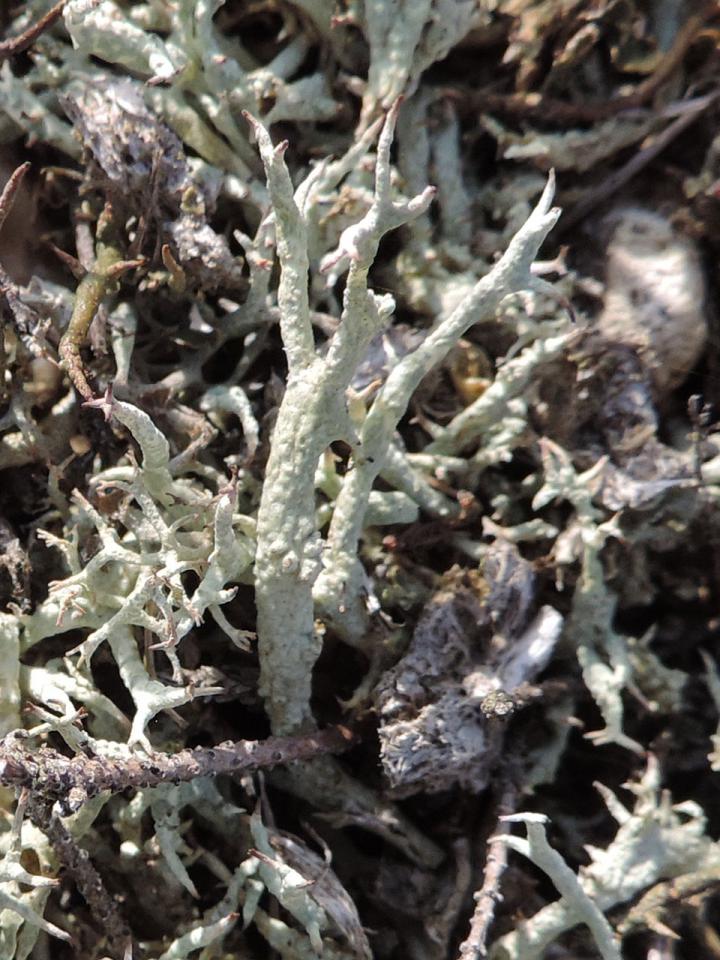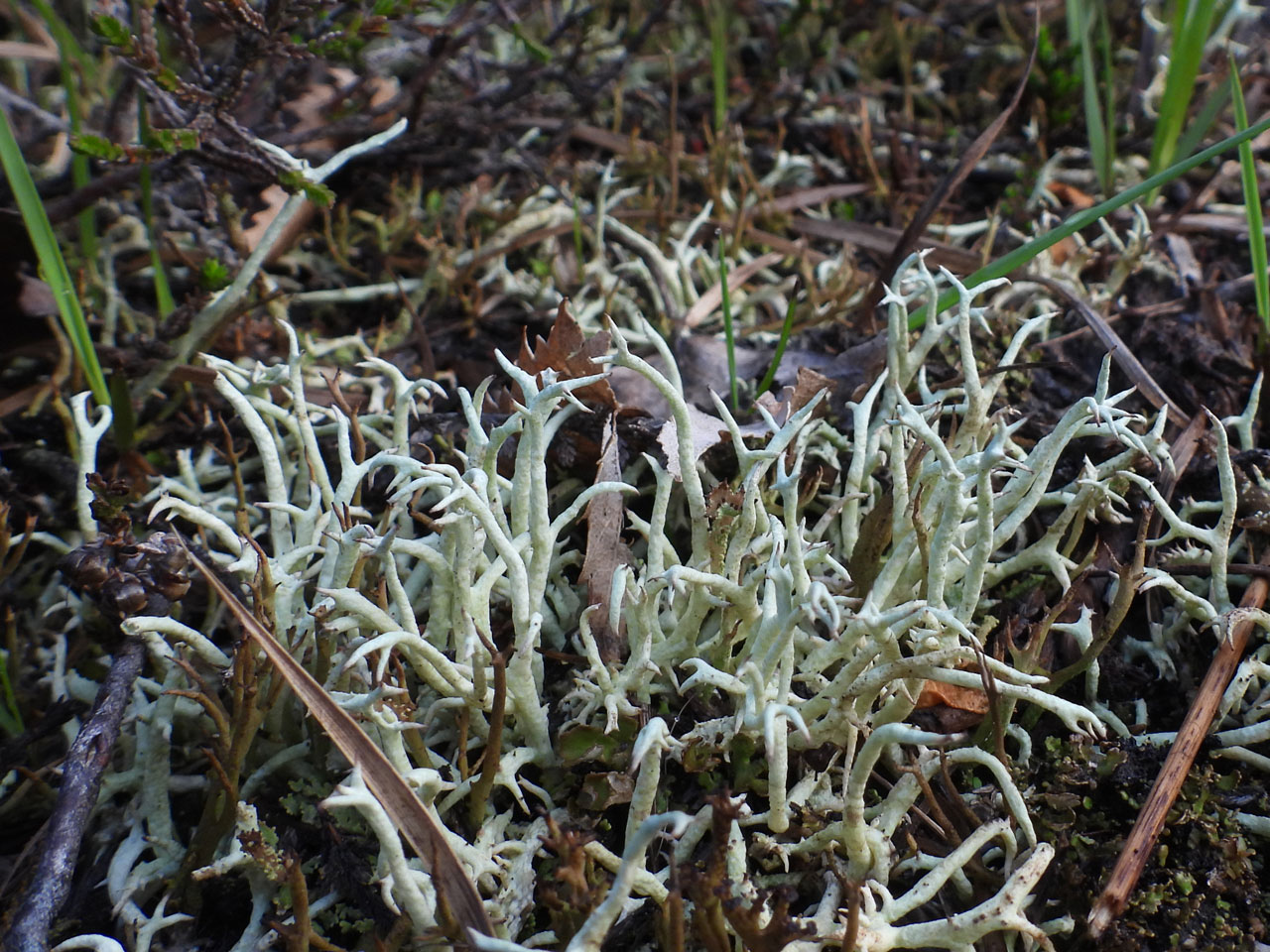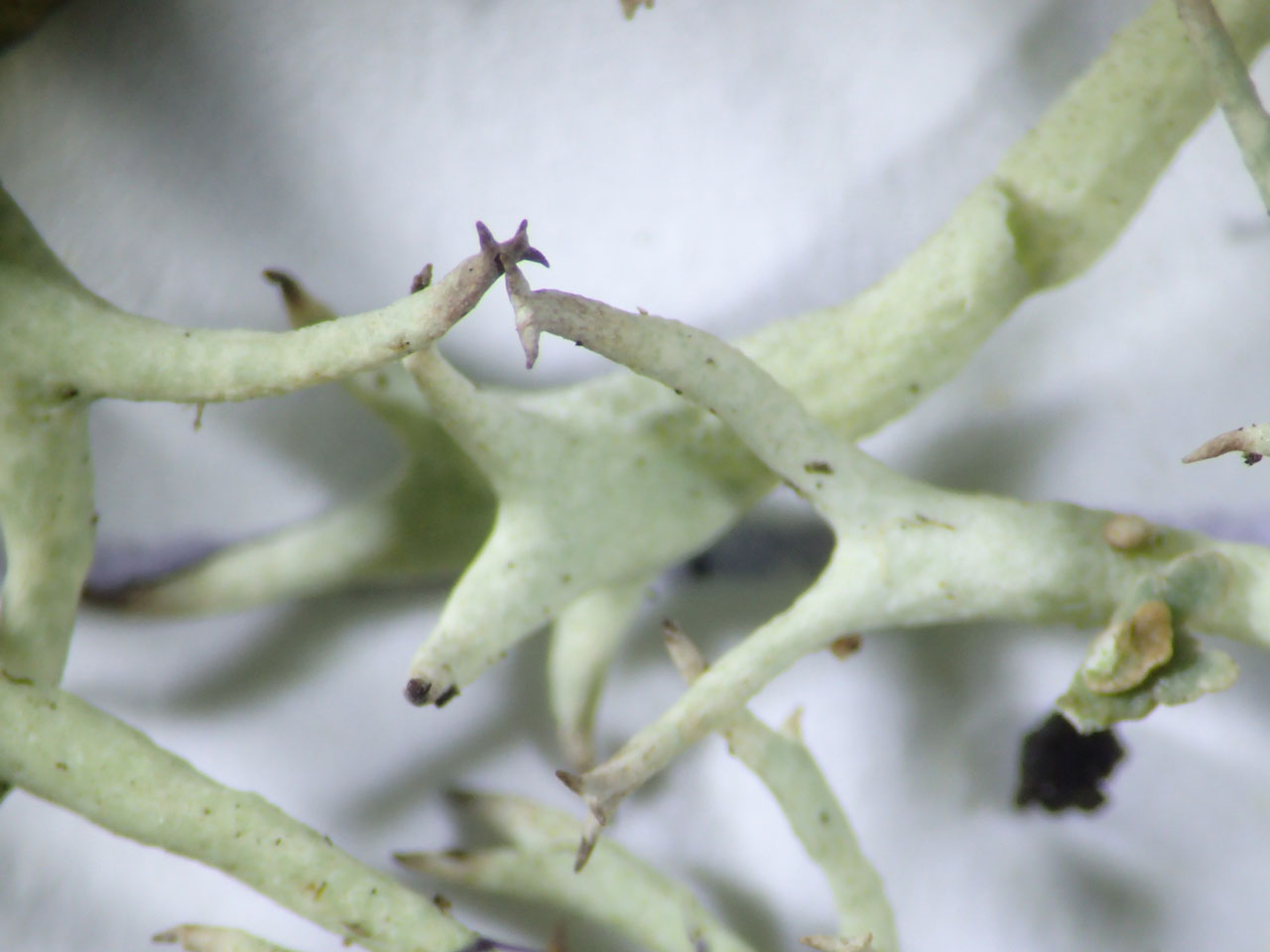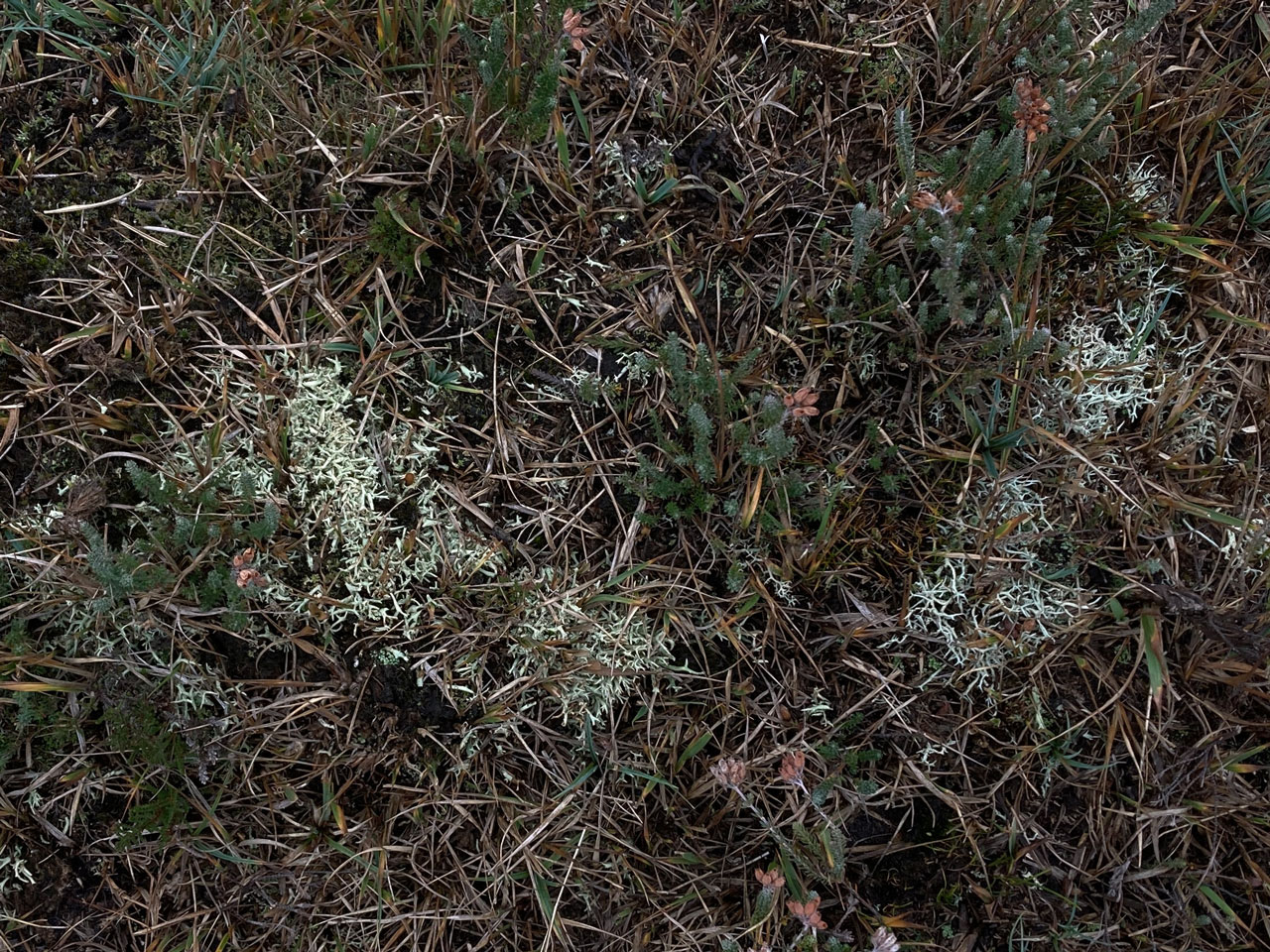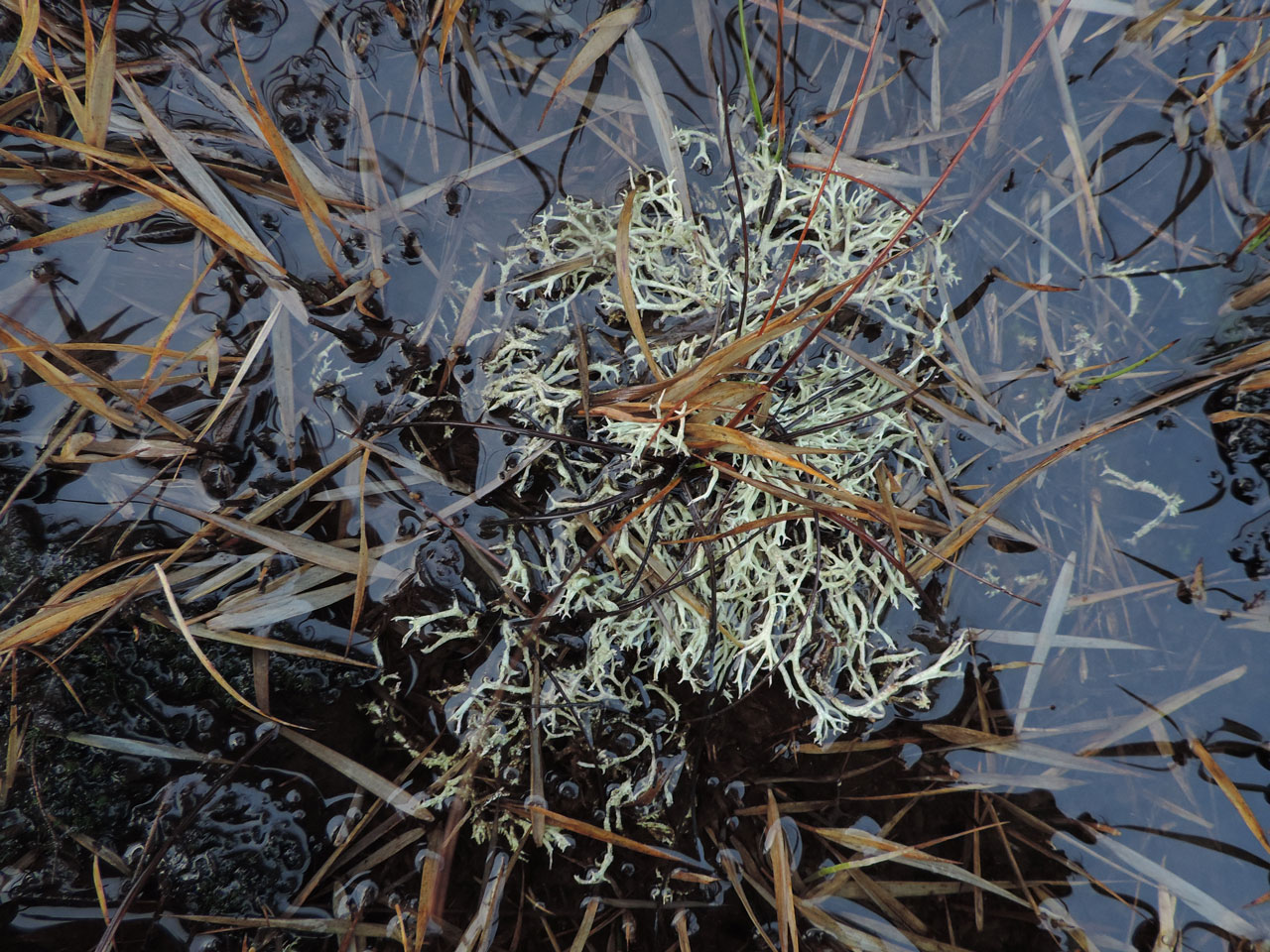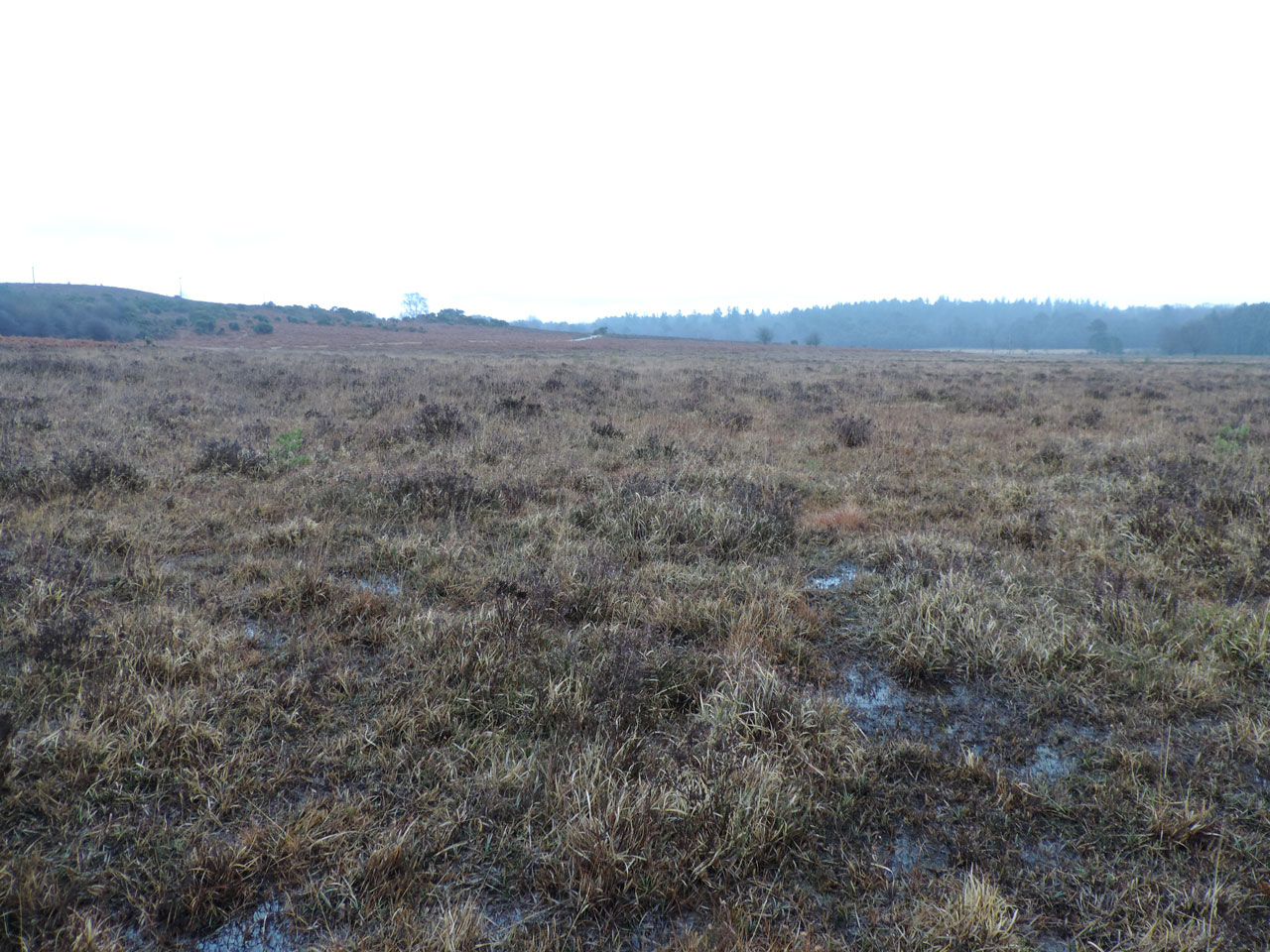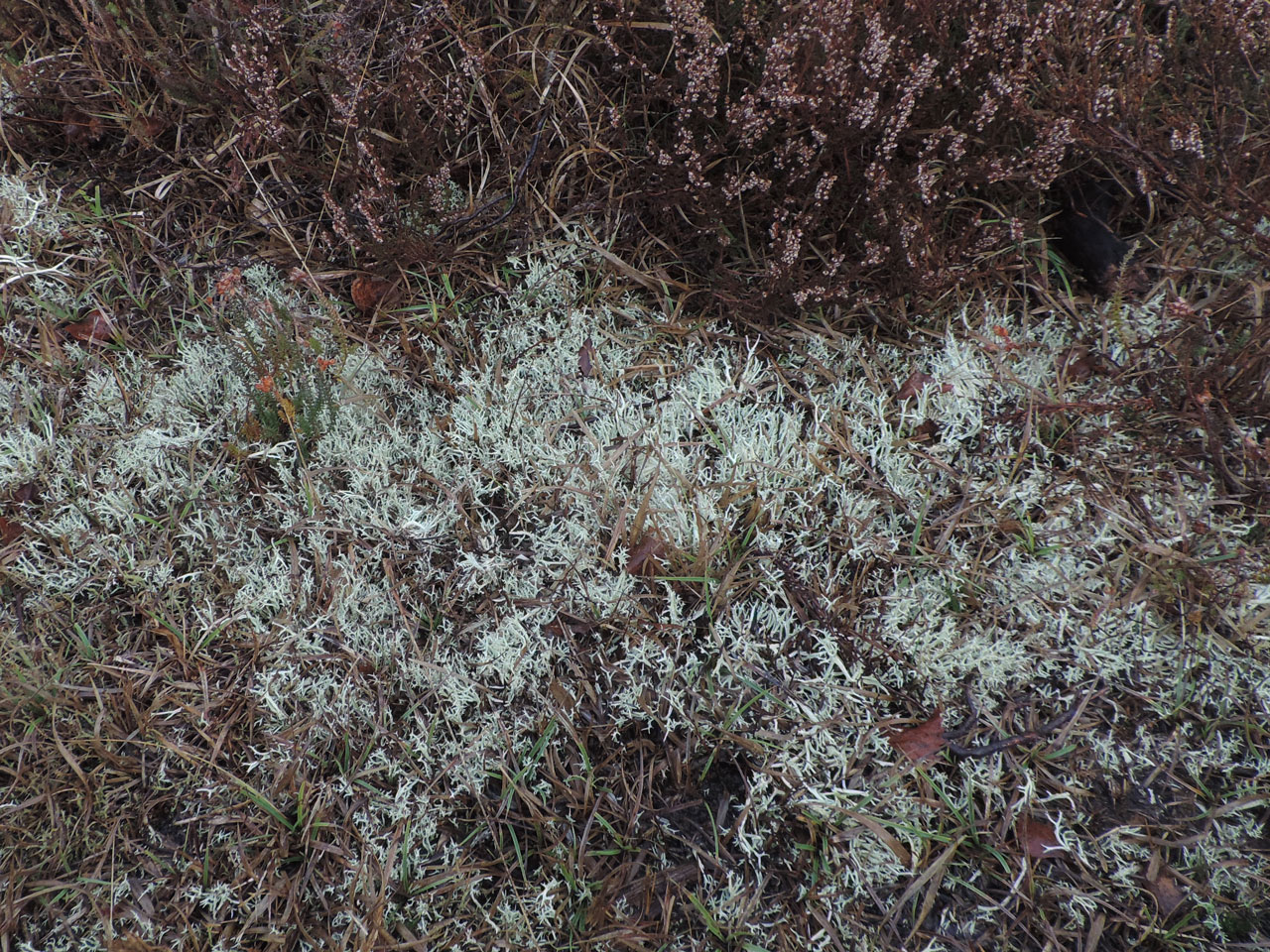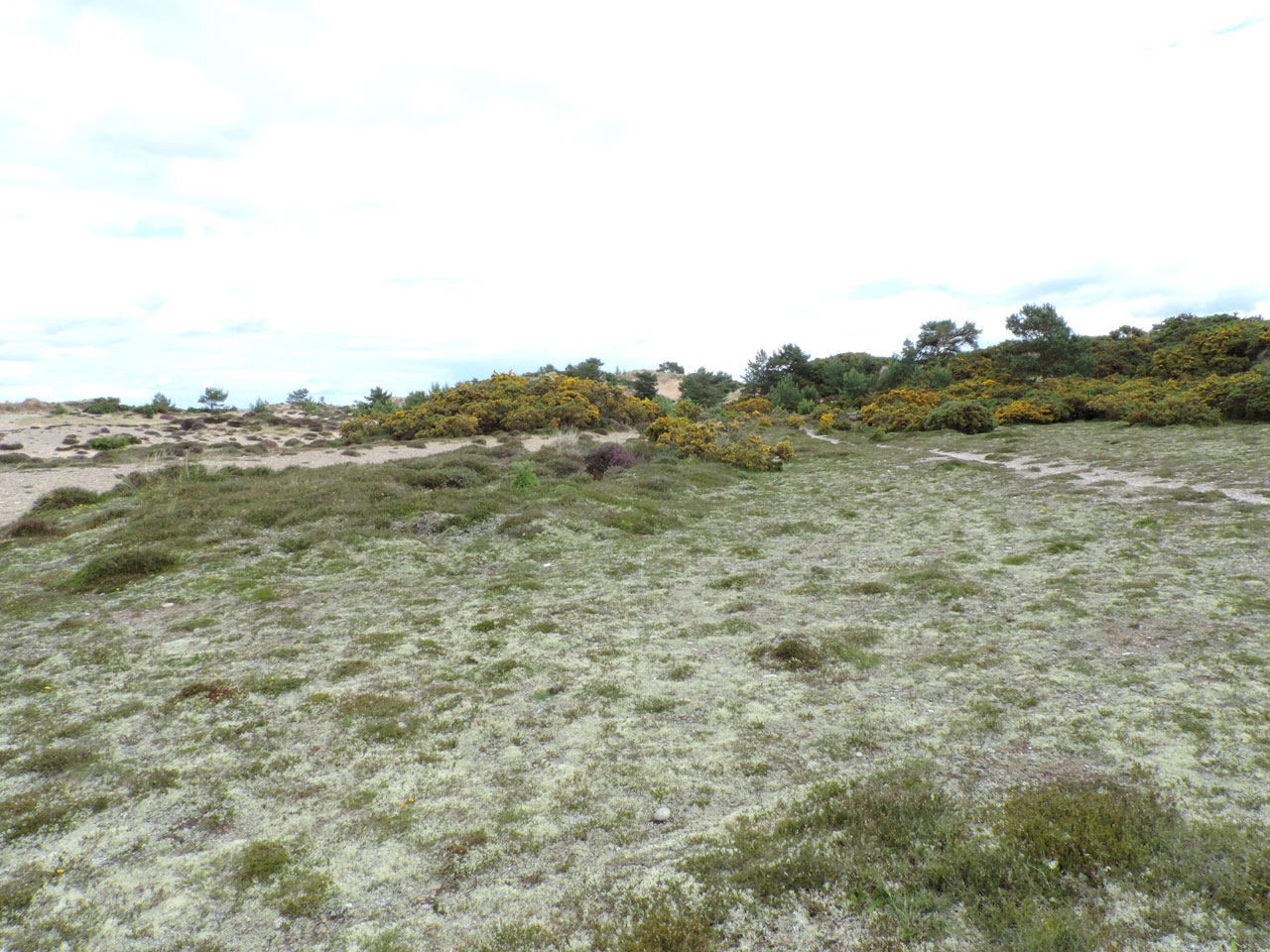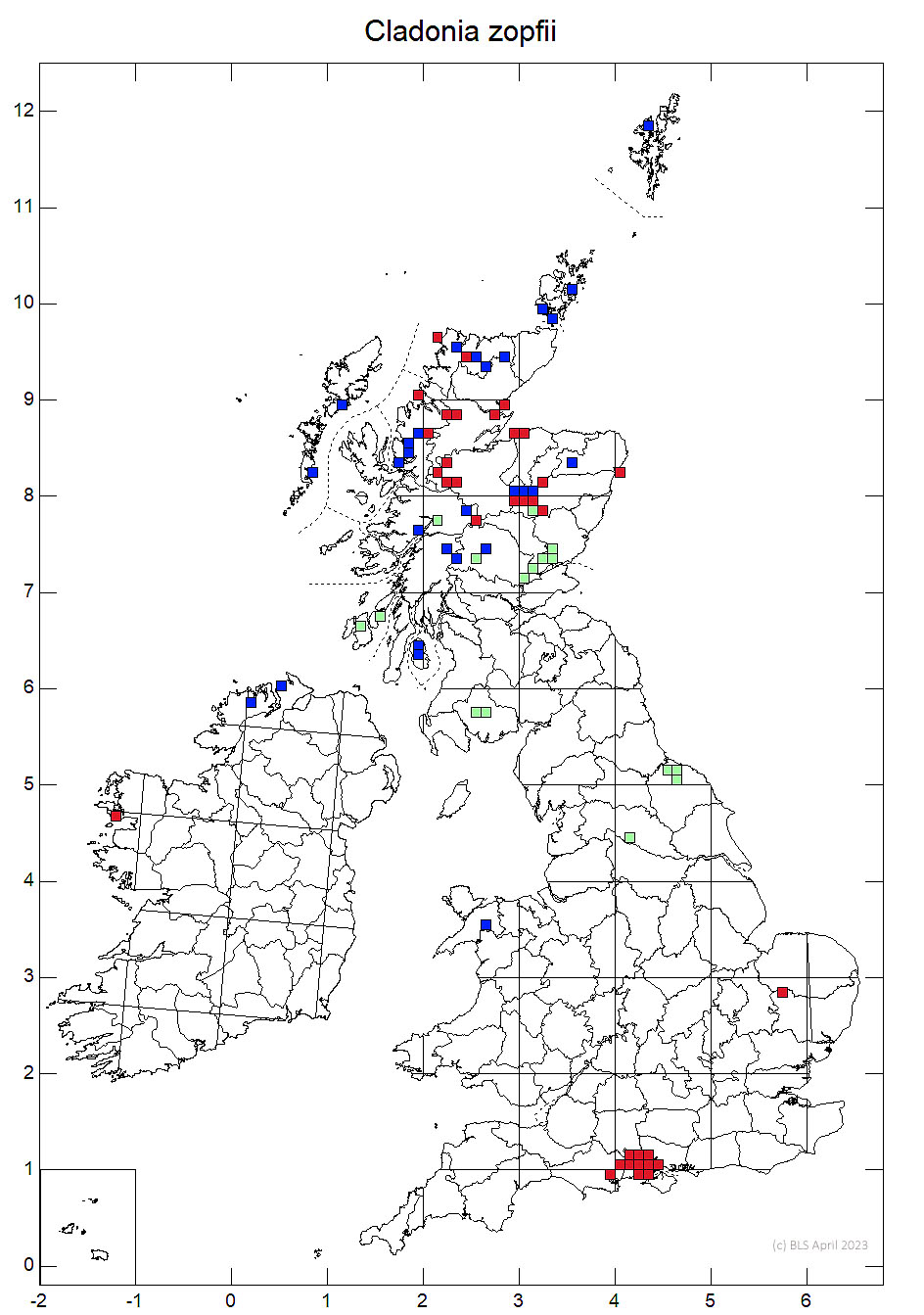A large heaththorn Cladonia generally similar to Cladonia uncialis, but with several distinctive characters relating to the podetia cortex colour and texture and to the morphology of the podetia branching and the branch tips. Initially difficult to separate from Cladonia uncialis, but once learned, well developed material can be spotted from several meters way. Much less frequent than Cladonia uncialis, but probably rather under recorded. Occurs in low productivity or disturbed moorland, heathland and duneland habitats, with current records from the Scottish Highlands and southern England but old records from Wales, northern England, southern Scotland and Ireland.
Like Cladonia uncialis, but podetia are usually more decumbent and the branches more widely divergent, with the axis closed and with long-pointed apices, which are not darkened, giving a different outline. The most distinctive character is the podetia colour and texture; the surface is opaque with the algae clusters not visible but forming verrucose lumps; this leads to the distinctive silver-grey colour. In contrast, Cladonia uncialis has a translucent surface, with the individual algae clusters visible in a smooth surfaced cortex. The result close up is a marbled surface forming a ‘giraffe-skin’ pattern. From a distance the greener areas with algae clusters gives a yellow-green or greyish green over all colour. This colour difference is very similar to that seen between Cladonia portentosa and Cladonia arbuscula for similar reasons.
Reactions: thallus C–, K–, KC+ yellow, Pd–, cortex UV– (usnic acid)
The differences between Cladonia zopfii and Cladonia uncialis are difficult to learn at first but the combination of the different outlines, colours and cortex patterning is quite distinctive once understood.
In a range of rather disparate habitats all linked by low productivity and open vegetation. The most widespread is on shallow peat and humic soils in low productivity moorland and heathland, often in wet situations, including pans that flood in winter. Patchy and infrequent but occasionally locally frequent. It is moderately resistant to cooler controlled burns in wetter habitats, which probably helps to maintain open habitats along with grazing. Some populations in the northern Scottish Highlands reach into the montane zone and occur in wind pruned wet and damp heaths. In the New Forest large populations are strongly associated with heavier grazing that maintains open and shorter heaths and prolongs the periods between controlled burns.
In contrast, it also occurs in disturbed drier acid soils in coastal and inland sand dunes and within hollow ways within lowland heaths. In costal dunes it occasionally dominates in dry hollows as at the Findhorn Dunes.

Cladonia zopfii has a distinct British distribution, shared by other heathland species such as Pycnothelia papillaria and Cladonia strepsilis. It is widespread (but probably very under recorded) in the Scottish Highlands and very locally frequent in southern lowland heathland south of the River Thames but rare in the uplands between. Of the three, Cladonia zopfii is the rarer, but is also probably much under recorded. There are scattered records from the Highlands, where a 2021 BLS meeting found it could be very frequent in some wet moorland habitats, and there may be some very large over looked populations in this region. It is also a prominant feature of the very lichen rich coastal dunes of north east Scotland, with some spectacular stands known from the Findhorn Dune system.
There are pre 1960s records from southern Scotland and northern England and later pre 2000 records from north Wales and north west Ireland but no recent records from any of these areas. It was rediscovered in the New Forest in 2011, where intensive survey has revealed it to be widespread and locally frequent. Searching in lowland heathlands beyond the New Forest has found a single large population in Dorset by Morden Bog and a small one in an old pit dug into cover sands in the Brecklands in Suffolk, but it appears to be very rare outside of the New Forest.
This lichen still has large populations in good quality, open and low productivity heathland, moorland and dune habitats, and there are probably significant numbers of over looked populations in the north. However, Cladonia zopfii appears to have been lost over large areas of Britain. In lowland areas these losses have probably been from habitat loss and vegetation over growth following declines in management intensity. Potentially past pollution may have be a factor in some upland areas and also over-grazing leading to the loss of heather moor in addition to habitat loss. Surviving populations appear dependant on combinations of extensive but locally heavy range grazing, controlled burning and accidental and occasional soil disturbance. The latter can either be natural, as in dunes, or from human activities. Declines in management intensity or disturbance regimes could threaten the surviving populations. Dune populations in north east Scotland in particular, are threatened by under management, including a resultant spread of Gorse scrub.
Britain: Notable
Burgaz, A.R., Ahti, T. & Pino-Bodas, R. (2020) Mediterranean Cladoniaceae. Madrid: Spanish Lichen Society.
Pino-Bodas, R., Sanderson, N., Cannon, P., Aptroot, A., Coppins, B., Orange, A. & Simkin, J. (2021). Lecanorales: Cladoniaceae, including the genera Cladonia, Pilophorus and Pycnothelia. Revisions of British and Irish Lichens 19: 1-45. Link
Sanderson, N. A. (2016) The New Forest Heathland Lichen Survey 2011 – 2015. A report by Botanical Survey & Assessment to Natural England, Forest Enterprise & The National Trust. Link
Text by Neil A Sanderson, based on Pino-Bodas et al (2021)

